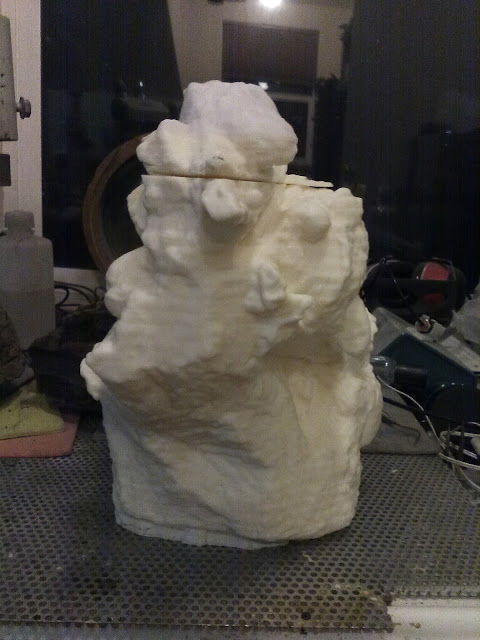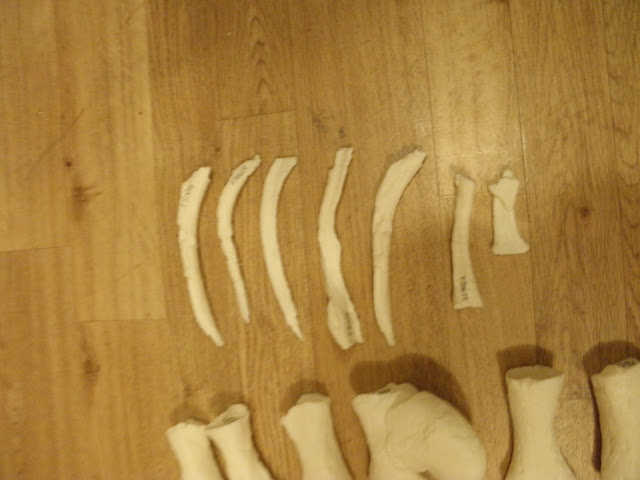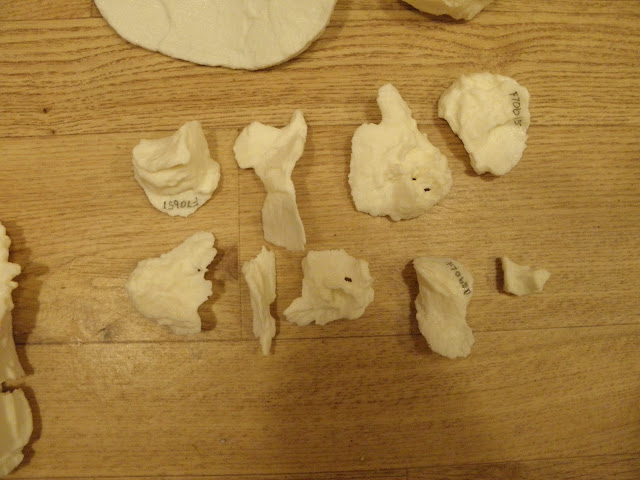I know it's been a year since I have posted on this subject, but sometimes not much is happening. The researchers at the UAF (University of Alaska Fairbanks) Pat Druckenmiller,et al have had a lot going on, what with the governor of Alaska (Him who shall not be named) threatening to shut down the place, one researcher leaving, and now the global disruption of schools and lives due to COVID2019 so research is progressing slowly. They recently finished and published the classification paper for the first thalattosaur found in Alaska. This animal was found at about the same time that Bernie was, and news about it was my link to Pat Druckenmiller. A link to the information can be found here:
https://news.uaf.edu/new-thalattosaur-species-discovered-in-southeast-alaska/
Here is a picture of what the entire articulated fossil looks like:

I am lucky enough to have a plaster copy of the original skull - and the snout indeed is needle-sharp! Here is a drawing of what the animal may have looked like, thanks to my favorite artist, Ray Troll:

The original is available through the link at the UAF announcement. Read the article - it's good fun. I especially like them using the rock saw to get the fossil out of the bedrock on one of the 4 days per year when the tide was low enough.
And here is a link to the full classification paper (if it's still active) :
http://www.nature.com/articles/s41598-020-57939-2
Back to Bernie, the Oregon thalattosaur. The classification paper is moving, though slowly. The paper's authors are probably going to be the same guys that did the Alaska thalattosaur paper. So while we are waiting, the Rice Rock and Mineral museum ( https://ricenorthwestmuseum.org/ )
asked me to build them a recreation of Oregon's thalattosaur. I had already done a skull and backbone copy, where all the backbones are scaled from an articulated Chinese specimen (Miodentis Brevis) and modeled off one of the Oregon centrum, neural arch and chevron. For the Rice specimen we printed a new version of the skull from UAF which has all the skull bones in their proper places. This is really a first and will be a major component of the classification paper when it gets published. This is the first 3D version of a thalattosaur skull in the world! All the others resemble the Alaska thalattosaur - flattened by tectonic forces and broken into many pieces. Since the preservation of the Oregon bones are unique (shallow water conglomerate matrix) we have relatively undistorted preservation, allowing a full reconstruction. The lower jaw is not finished yet, though it will be part of the final paper as we do have 3 parts of a jaw. Here's the skull ( I can't share details as it has to wait for the paper):
The eyeballs are over 2 inches in diameters - the pupils are a copy of a crocodile's that I bought online. I certainly wouldn't like to have that animal considering me for a meal!
The backbones are all like those I printed out a couple of years ago for my traveling display. What is new is that I have added shoulder and pelvic girdles and limbs! I posed the body and limbs like some photographs of a swimming crocodile, though Ray's picture (see above) may also be correct. It was not easy to figure out which bones are which, particularly of the girdles. Again, they were all scaled off the Chinese thalattosaur but printed from the Oregon thalattosaur shape.
Here it is unceremoniously being hauled in my pickup to the museum in pieces:
Here is the construction process - hung by wires from the rafters of the NW gallery:
Here it is assembled for the first time in about 230 million years:
So when we are allowed to reopen the museum after the COVID19 precautions, everyone will be allowed to see what we did while they were gone.
Sincerely, Greg Carr
May 2, 2020








































